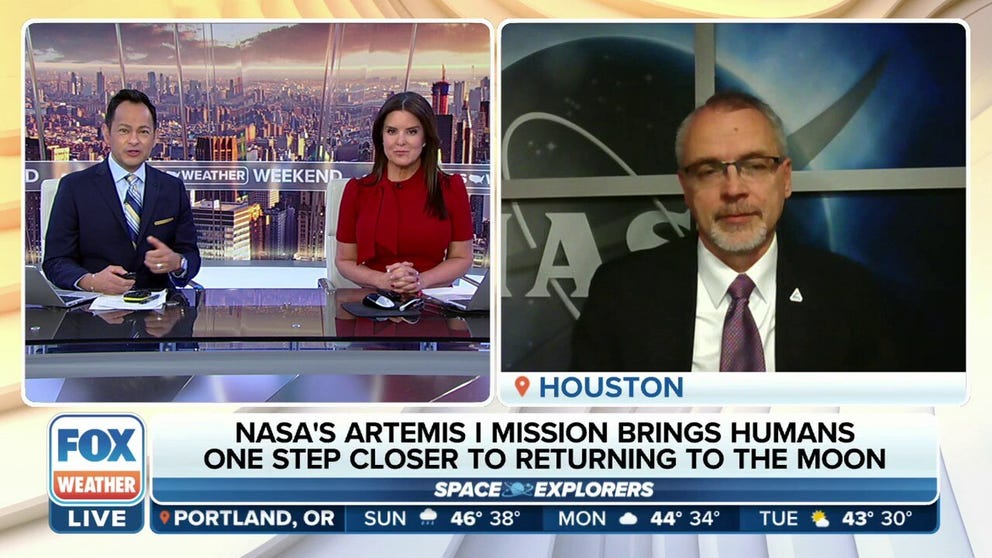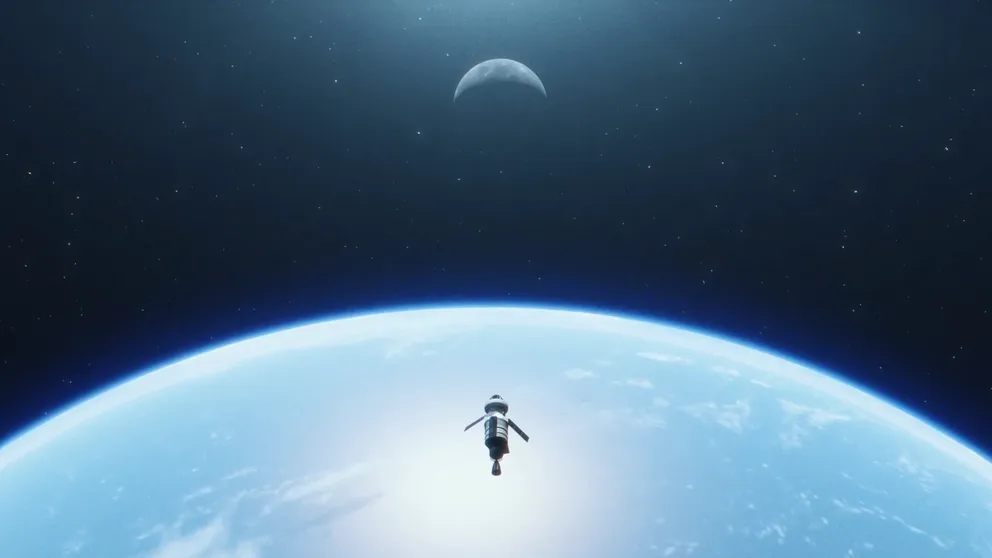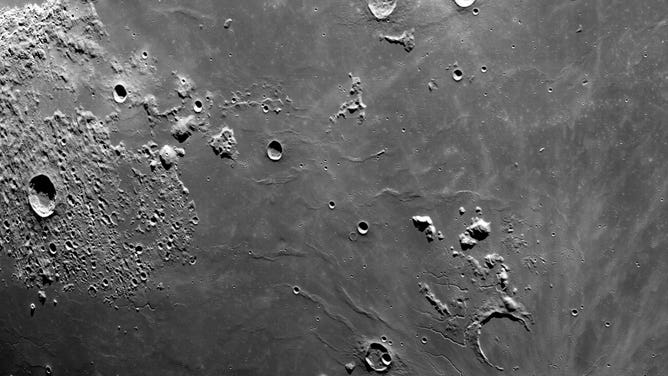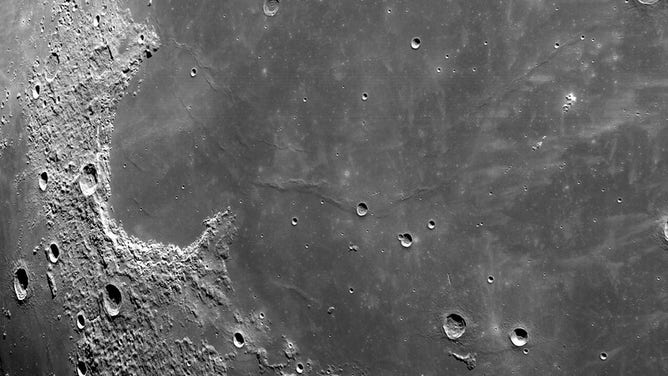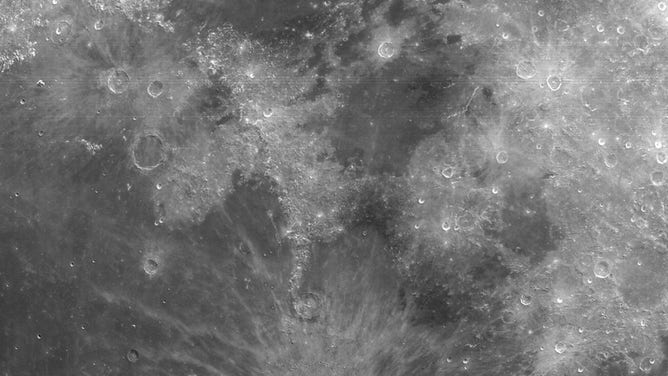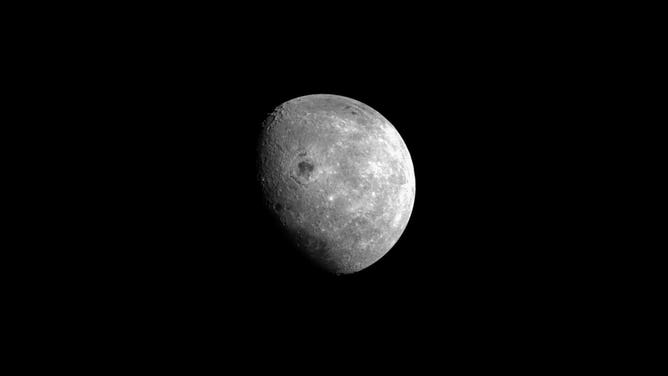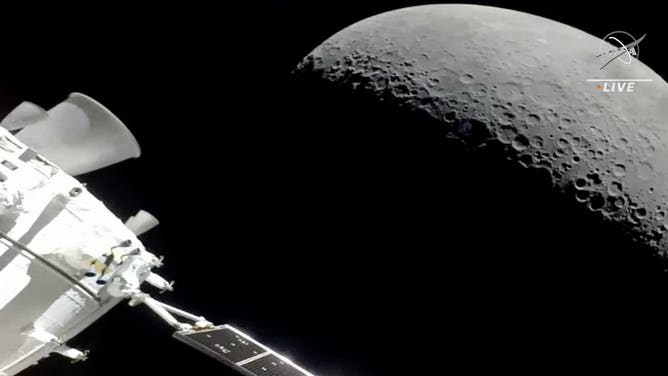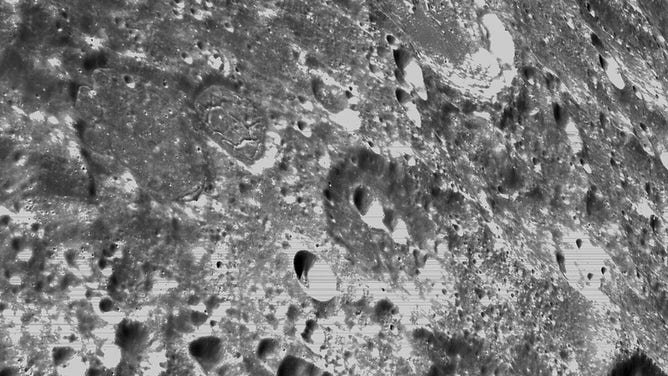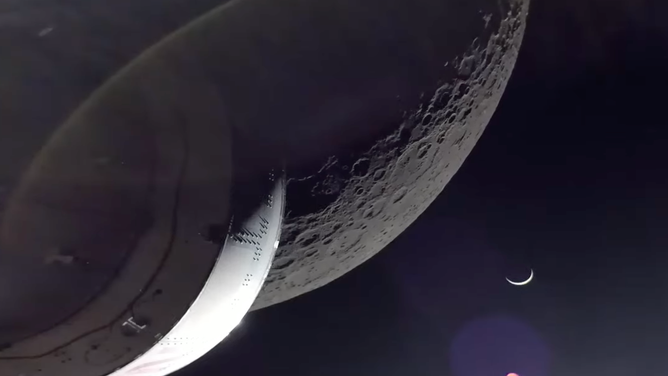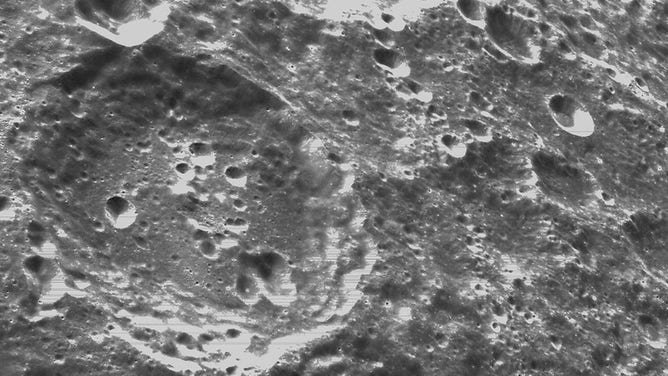Homecoming day: NASA's Orion spacecraft to complete historic moon mission with Pacific splashdown
The Artemis 1 test flight ends Sunday when Orion splashes down in the Pacific Ocean at 12:39 p.m. ET. NASA's spacecraft designed to carry humans back to the moon is in the final stages of a 25.5 moon-orbiting mission.
NASA's Orion spacecraft hours away from historic splashdown in Pacific
The Artemis 1 test flight ends Sunday when Orion splashes down in the Pacific Ocean. Jim Free, Associate Administrator for NASA's Exploration Systems Development, speaks with FOX Weather to discuss what we can expect when the Orion splashdown happens Sunday afternoon.
When the Orion spacecraft splashes down off the Pacific coast Sunday, it will mark the final milestone of the nearly 26-day Artemis 1 test flight and a big step toward returning humans to the moon.
NASA's Orion spacecraft is en route back from orbiting the moon on its maiden voyage that all started with a launch from Kennedy Space Center in Florida last month.
Orion completed a series of engine burns to set its course home for Earth. The first happened last week, with a 45-second distant retrograde orbit (DRO) departure burn, setting the spacecraft up to begin its flight home, followed by a return-powered flyby (RPF) burn on Monday, putting Orion on the correct trajectory to splashdown in the Pacific Ocean.
Live coverage of the splashdown events begins at 11 a.m. EST on NASA.gov.
There are two blackout periods during the re-entry and splashdown operations when NASA will lose communication with Orion.
NASA will look for calm seas, minimal wind and a low chance of precipitation to safely recover the Orion capsule.
The space agency originally planned for Orion to splash down off the coast of San Diego, California, however, due to a cold front moving in this week, NASA is moving the landing site south for better weather.
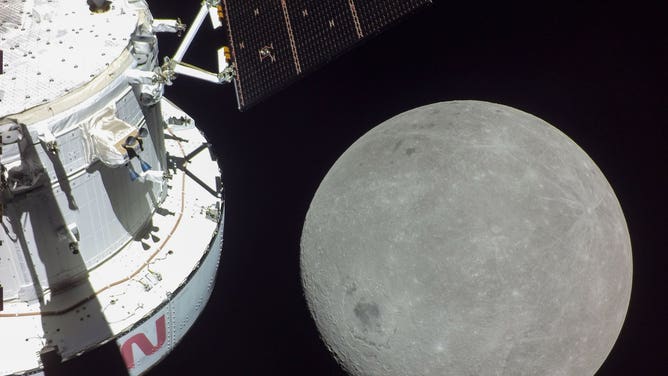
NASA's Orion spacecraft takes a "selfie" with the moon on Nov. 21, 2022 during the Artemis 1 test flight. (Image: NASA)
(NASA)
The weather system causing concern at the San Diego landing site is the same system that forecasters are worried will bring widespread threats to all areas of the country.
NASA flight director Judd Frieling said the new plan is for Orion to splash down off the coast of Baja California, Mexico at 12:39 p.m. ET on Sunday.
U.S. Navy recovery teams will be waiting onboard the USS Portland to retrieve the spacecraft from the water.
With the re-entry happening during daylight and more than 100 miles offshore it's unlikely people in Mexico or Southern California will be able to see Orion returning to Earth, but they might hear it.

"You're more likely to hear the sonic boom from the vehicle approaching than anything," Artemis 1 mission manager Mike Sarafin said.
On Thursday, NASA's Artemis I Landing and Recovery Director Melissa Jones conducted a final go/no-go poll with her team to recover Orion. The team is "go" to proceed.
WATCH HOW THE US NAVY WILL RECOVER THE ARTEMIS I MISSION SPACECRAFT FROM THE PACIFIC OCEAN
Earth reentry is a crucial part of the Artemis 1 test flight because Orion will travel at 25,000 mph when it returns to Earth, putting its heat shield to the test against 5,000 degrees Fahrenheit temperatures. It's critically important the heat shield protects the spacecraft and its future astronaut crew.
To the moon and back: Highlights from Orion's Artemis 1 test flight
Artemis 1 mission: Relive Orion's historic journey to the moon before splashdown
Splashing down on December 11, the successful completion of the Artemis I mission paves the way for future expeditions to Mars and other destinations in the solar system.
The Space Launch System rocket launch began Orion's journey traveling further than any other vehicle designed to carry humans, reaching 270,000 from Earth.
Throughout the mission, NASA managers said Orion performed above expectations for a first flight. Engineers worked to troubleshoot some communication and power issues but overall said those were learning curves to flying a new spacecraft.
Before heading back to Earth, Orion made its final close approach to the moon, traveling around 4,800 mph as it swept by the far side of the lunar surface. As Orion completed its final flyby, the spacecraft cameras captured Earth rising on the horizon.
Orion made two close flybys of the moon, reaching about 80 miles from the lunar surface and capturing beautiful detail of lunar craters.
The next time an Orion spacecraft makes this trip, NASA astronauts will be on board to see it in person.
